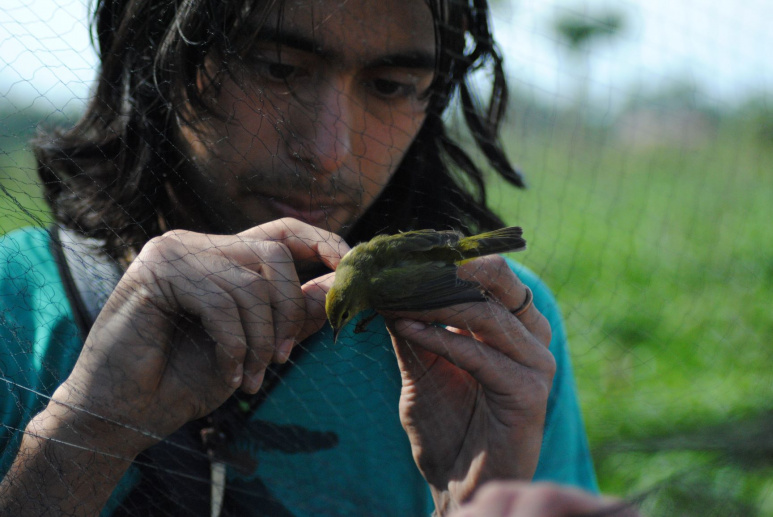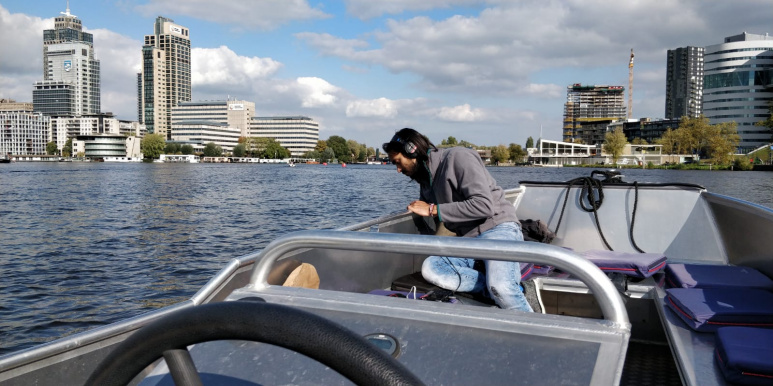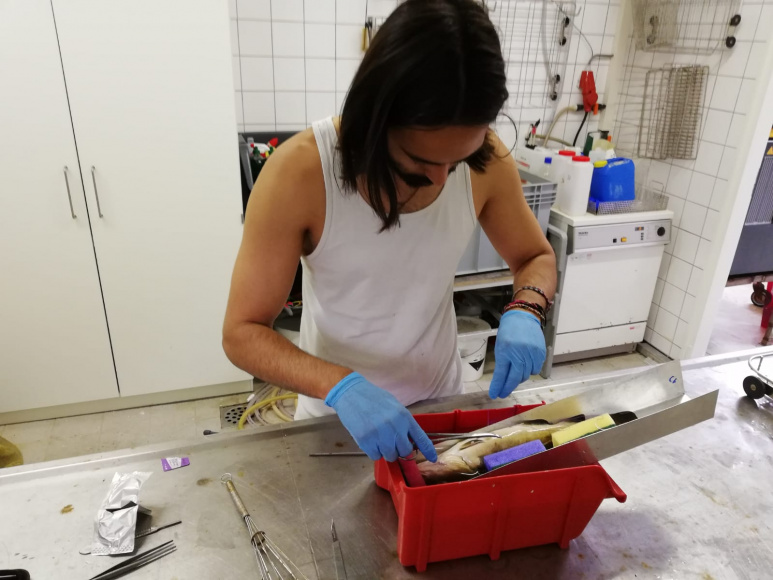My RIBES story: James Campbell
James Campbell is a biologist and RIBES early stage researcher hosted by IGB (Leibniz-Institute of Freshwater Ecology and Inland Fisheries). Within his RIBES project, he is exploring effects of artificial light on migrating fish. Here he writes about his background and his current project:
I've always had an interest in how quantitative tools can allow us to gain a deeper understanding and appreciation of the natural world. Growing up on a small farm in the Scottish highlands, and later in the Canadian prairies, my youthful interests were nature and programming. This led me to start my undergraduate studies in bioinformatics. I quickly decided I wanted a more direct working relationship with the natural world and changed my major to Ecology, of which I followed up with a masters degree at the University of Amsterdam. Over the past decade, I've had the good fortune of getting hands on experience in numerous research projects in Ornithology and marine biology with a particular specialization in bioacoustics. Throughout my work, I've always been drawn to using new developments in statistics and informatics to find new ways to ask and answer questions in Ecology.
 James Campbell catching an Orange-crowned warbler for a migratory research project in Jalisco, Mexico.
James Campbell catching an Orange-crowned warbler for a migratory research project in Jalisco, Mexico.
I'm currently a PhD candidate in the RIBES ESR02 project where I'm tasked with exploring the effects of artificial light (ALAN) at night on migrating fishes. Under the supervision of Franz Hölker at the IGB (Leibniz-Institute of Freshwater Ecology and Inland Fisheries), I'll be using agent based models to examine my research questions. The goal is to extrapolate the results from the few descriptive studies on ALAN effects on fish into a broader scope examination on how they may impact migrations. To address this, I'll first have to learn how to model the migration movements of a select few river fishes which are likely to be particularly vulnerable to ALAN effects.
 James Campbell measuring the anthropogenic soundscape in Amsterdam canals.
James Campbell measuring the anthropogenic soundscape in Amsterdam canals.
Similar to my previous experience in marine bioacoustics, consideration of light as an environmental pollutant has only recently drawn the attention of researchers and policymakers. As a result, the challenges in this field are numerous. Paving the road to actional policy guidance on this topic requires developing new methodologies and conceptual frameworks for posing questions. I'm excited to be facing these challenges as I explore this relatively young field of research. I'm particularly keen to incorporate recent developments in data collection and analysis, such as acoustic telemetry and approximate Bayesian computation, into solutions for this field.
 James Campbell surgically implanting an accelerometer datalogger in an Atlantic cod for movement analysis in Zeeland, Netherlands.
James Campbell surgically implanting an accelerometer datalogger in an Atlantic cod for movement analysis in Zeeland, Netherlands.
Finally, being a part of the RIBES training project affords me the opportunity to network with other young researchers and their respective institutions. By understanding how my peers overcome challenges in their unique specializations, I can learn a diverse set of skills and methods which will in turn supplement me in my own work and provide me with perspective on how my research contributes to the broader picture of freshwater conservation.
